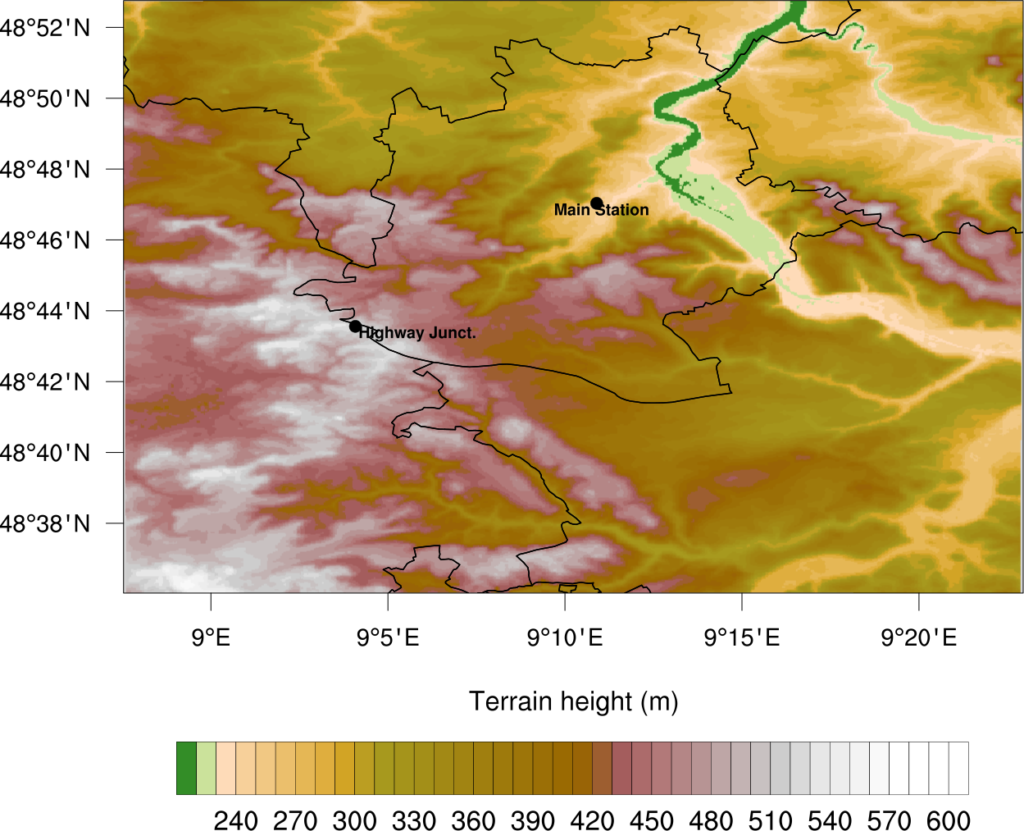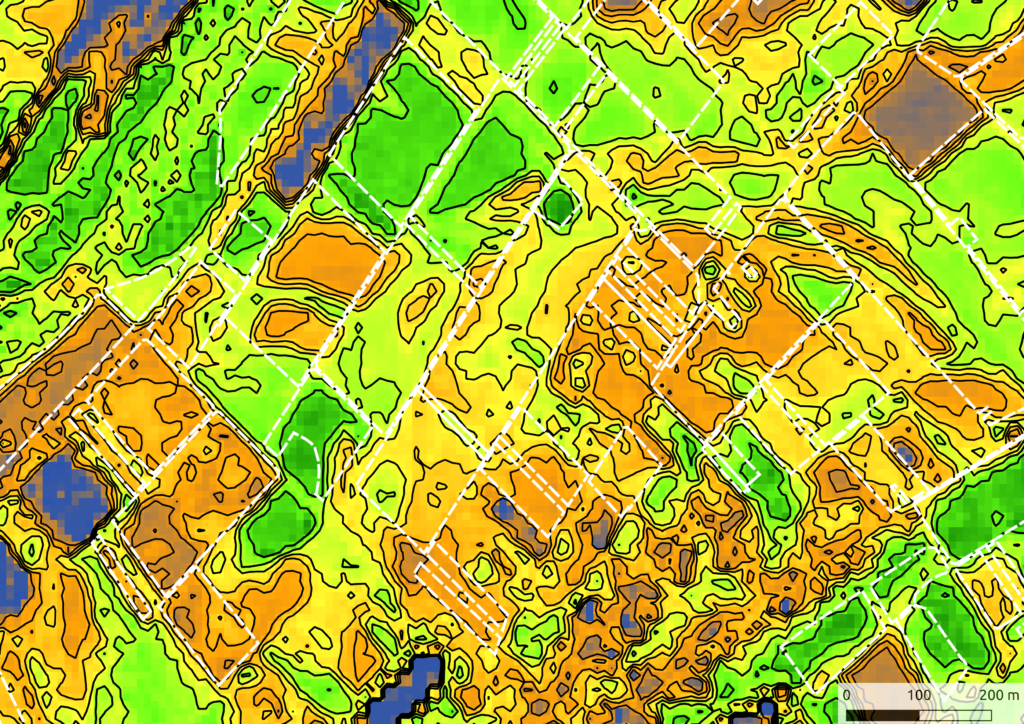Use Case I: PMFS – Particulate Matter Forecast Service
The goal of the PMFS use case is the provision of an accurate forecast for the concentration of particulate matter in the Stuttgart metropolitan area. Particulate matter is an increasingly important issue in particular as it may have an impact on health, especially on the respiratory system.
To achieve this, a prototype for a potentially operational particulate matter forecasting system will be developed. The applied model is the Weather Research and Forecasting (WRF) model, which is enhanced by a Chemistry component with different levels of complexity. The model is able to simulate the emission, transport, and mixing of trace gases and aerosols with the meteorology.
The special feature in this project is, that the forecast will be provided on a turbulence permitting horizontal resolution of 50 m for the Stuttgart Metropolitan area. This resolution will allow to better represent the special orographic features of Stuttgart with its elevation differences of more than 250 m.
As the computations are very expensive, they are performed at the HLRS at the University of Stuttgart.

Use Case II: AgriCOpen – Satellite Data Service for Agriculture
The goal of the AgriCOpen use case is the provision of products and services for agricultural smart farming practices based on open satellite imagery data of Sentinel-2. Digital agricultural practices need spatial information about the variability and current situation on agricultural fields to optimise management and production. Data analyses derive vegetation indices from satellite imagery, which are related to crop and soil parameters. These products can then be used to derive management zones for precision farming techniques or to estimate variations in yield potential or levels of fertilisation. The availability of specialised, ready-to-use satellite imagery products is a prerequisite for the integration into Farm Management Information Systems (FMIS). Such products foster the adoption of digital management practices and enable better decision making, as well as allow site-specific technology to be introduced on a larger scale.

